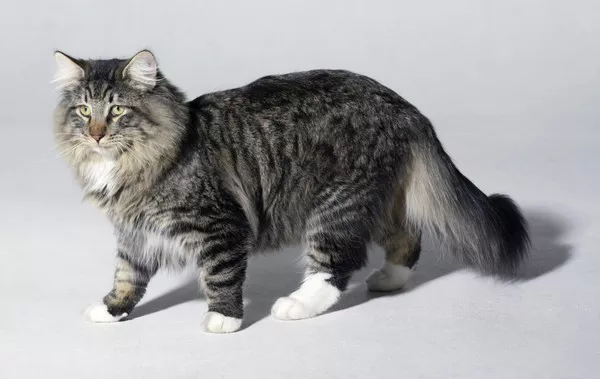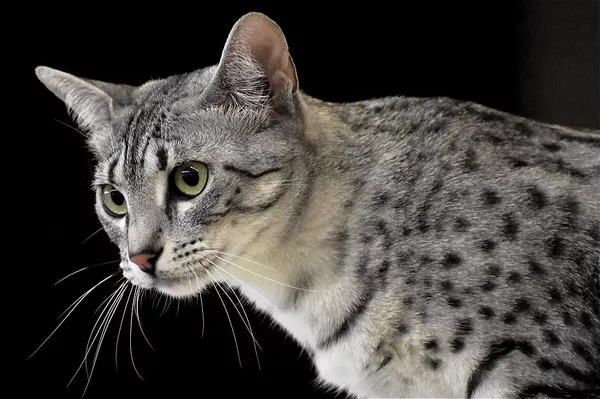Training a Norwegian Forest Cat involves a blend of patience, understanding, and strategic techniques tailored to their intelligent and independent nature. As a distinctive and majestic breed, the Norwegian Forest Cat (NFC) requires specific approaches to foster a harmonious relationship with their human companions. In this comprehensive guide, we explore effective techniques for training your Norwegian Forest Cat, encompassing key considerations, positive reinforcement strategies, and tips for addressing common behaviors.
Norwegian Forest Cat: A Brief Overview
The Norwegian Forest Cat, known for its robust build, luxurious coat, and bushy tail, hails from the forests of Norway. Renowned for their intelligence and agility, these cats possess a playful and independent demeanor. Training a Norwegian Forest Cat involves recognizing and respecting their individuality while nurturing a bond based on trust and positive reinforcement.
Key Considerations for Training Your Norwegian Forest Cat
a. Establishing Trust:
Building trust forms the foundation of successful training. Spend quality time bonding with your Norwegian Forest Cat through gentle interactions, petting, and play. Allow them to acclimate to your presence and build a sense of security.
b. Patience is Paramount:
Norwegian Forest Cats, characterized by their independent spirit, may not respond immediately to training commands. Exercise patience, and avoid forcing compliance. Positive reinforcement techniques work best with NFCs, promoting a cooperative attitude.
c. Create a Positive Environment:
Ensure the training environment is free from distractions and stressors. NFCs thrive in calm and comfortable settings, facilitating a more focused and receptive training experience.
Positive Reinforcement Techniques for Norwegian Forest Cats
a. Treat-Based Training:
Utilize high-value treats to reward desired behaviors. When your NFC exhibits the desired action, promptly reward them with a treat. This positive reinforcement encourages repetition of the behavior.
b. Clicker Training:
Introduce a clicker as a consistent sound marker for positive behavior. Click when your cat performs the desired action, followed by a treat. Over time, the clicker becomes associated with positive outcomes, reinforcing the training process.
c. Play as a Reward:
For Norwegian Forest Cats, play is a powerful motivator. Incorporate interactive play sessions into training routines. Use toys to engage and reward your NFC, reinforcing their responsiveness to commands.
d. Verbal Praise:
Coupled with treats or play, offer verbal praise when your NFC exhibits desired behaviors. Consistent and enthusiastic praise strengthens the positive association with the action.
Common Behavioral Training Goals for Norwegian Forest Cats
a. Recall Training:
Teaching your NFC to come when called is essential for their safety. Start in a controlled environment, using treats and positive reinforcement to encourage them to approach when called. Gradually increase the distance over time.
b. Litter Box Training:
While NFCs generally adapt well to litter box use, reinforcement is crucial. Keep the litter box clean, choose a suitable litter, and reward your cat with treats or play when they use the designated area.
c. Scratching Post Training:
Provide a variety of scratching posts and pads. When your NFC uses them, reward the behavior with treats or play. Positive reinforcement helps redirect their natural scratching instincts to appropriate surfaces.
d. Harness and Leash Training:
Introduce harness and leash training gradually. Allow your NFC to familiarize themselves with the harness indoors before venturing outside. Reward calm behavior and exploration on the leash.
Addressing Challenges in Norwegian Forest Cat Training
a. Independent Nature:
NFCs value their independence, and training should respect this trait. Offer choices within the training framework, allowing them to feel a sense of control.
b. Shyness or Timidity:
If your NFC displays shyness, create a quiet and secure training space. Gradually introduce new stimuli, rewarding confident behavior with treats and praise.
c. Destructive Behavior:
To deter destructive behavior, provide ample outlets for scratching, climbing, and play. Use positive reinforcement to redirect them to designated areas and discourage unwanted actions.
Training Tips for Norwegian Forest Cat Kittens
a. Early Socialization:
Expose kittens to various environments, people, and gentle handling from an early age. Positive experiences during the critical socialization period contribute to a well-adjusted adult cat.
b. Play-Based Learning:
Incorporate play into training sessions to make learning enjoyable for kittens. Interactive toys and playtime serve as effective tools for reinforcing positive behaviors.
c. Gradual Exposure:
Introduce new experiences gradually. Whether it’s harness raining or grooming, allow kittens to acclimate at their own pace, rewarding each successful step.
Conclusion
Training a Norwegian Forest Cat requires a thoughtful approach that acknowledges their intelligence, independence, and unique personality. By incorporating positive reinforcement techniques, understanding their individual needs, and maintaining patience throughout the process, guardians can cultivate a strong and enduring bond with their NFC. Whether addressing common behaviors or nurturing kittens, the journey of training a Norwegian Forest Cat is an opportunity for shared experiences, mutual understanding, and the creation of a harmonious feline-human relationship.























